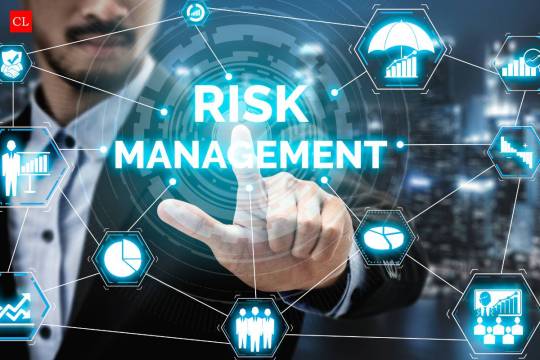Text
Recall Alert: Planters Nuts Suspected of Listeria Contamination

Source-NBC News
Contaminated Nuts Prompt Recall
Minnesota-based Hormel Foods Sales LLC has issued a recall for two Planters nuts, citing concerns over potential listeria monocytogenes contamination. The affected items, Honey Roasted Peanuts, and Deluxe Lightly Salted Mixed Nuts, were manufactured at one of Hormel’s facilities before distribution to Publix and Dollar Tree warehouses. The recall spans across five states in the southeastern U.S., namely Florida, Georgia, Alabama, North Carolina, and South Carolina.
Health Risks Associated with Listeria
Listeria monocytogenes, the organism suspected in the contamination, poses severe health risks, particularly to vulnerable populations such as young children, the elderly, and individuals with weakened immune systems. Symptoms of listeriosis, the infection caused by the bacteria, range from high fever and severe headache to more severe complications including miscarriages or stillbirths in pregnant women. Hormel, in its voluntary recall notice, emphasized the potential dangers associated with consuming the contaminated products.
Some Planters nuts recalled over possible listeria contamination
youtube
Identification and Response to the Recall
The recall specifically targets 4-ounce packages of Planters Honey Roasted Peanuts and 8.75-ounce cans of Planters Deluxe Lightly Salted Mixed Nuts. Consumers are advised to check for specific UPC codes and best-by dates provided by the company. While there have been no reported illnesses linked to the recalled products, Hormel has initiated a comprehensive investigation to pinpoint the possible source of contamination. Additionally, affected retailers have been notified, urging consumers to refrain from consuming the nuts and instead return them for a replacement or full refund. Hormel reiterated its commitment to food safety, underscoring the ongoing priority placed on ensuring the well-being of consumers.
In conclusion, the recall of Planters nuts underscores the critical importance of stringent food safety measures in safeguarding public health. Consumers are urged to exercise caution and heed the recall notices to mitigate any potential health risks associated with the contaminated products.
Also Read: Unveiling the Benefits and Drawbacks of the Fruit Water Diet
0 notes
Text
Exploring Lucrative Small Business Ideas: A Gateway to Entrepreneurial Success
https://ciolookleaders.com/wp-content/uploads/2024/05/2-Exploring-Lucrative-Small-Business-Ideas_-A-Gateway-to-Entrepreneurial-Success.jpg
In the landscape of today’s economy, the allure of entrepreneurship continues to beckon individuals seeking autonomy, financial independence, and creative fulfillment. Small businesses are the lifeblood of economies worldwide, contributing to innovation, employment, and community development. With the advent of digital technology and the democratization of information, the barriers to entry for starting a small business have significantly lowered. In this article, we delve into a diverse array of small business ideas, catering to various interests, skill sets, and market demands.
Here are 20 Lucrative Small Business Ideas:
1. Online Retail Store
With the proliferation of e-commerce platforms and the growing trend of online shopping, starting an online retail store has become an attractive venture. Whether specializing in niche products, handmade crafts, or dropshipping, the potential for scalability and global reach is immense.
2. Freelance Services
Leverage your skills and expertise by offering freelance services in areas such as graphic design, copywriting, web development, or digital marketing. Platforms like Upwork, Fiverr, and Freelancer provide a marketplace for connecting with clients and building a lucrative freelance career.
3. Consulting Business
If you possess specialized knowledge or industry experience, consider starting a consulting business. Offer strategic guidance, advisory services, or training workshops to businesses seeking to optimize their operations, expand their market reach, or navigate challenges.
4. Home-Based Catering
For those passionate about cooking or baking, a home-based catering business can be a rewarding endeavor. Cater events, parties, or corporate gatherings with delicious cuisine tailored to your client’s preferences.
5. Personal Fitness Training
With the growing emphasis on health and wellness, there’s a burgeoning demand for personal fitness trainers. Whether conducting sessions in clients’ homes, outdoor spaces, or establishing a small studio, help individuals achieve their fitness goals and lead healthier lifestyles.
6. Social Media Management

Small businesses often require assistance in managing their social media presence and engaging with their audience effectively. Offer social media management services, including content creation, community management, and performance analysis, to help businesses enhance their online visibility and engagement.
7. Eco-Friendly Products
Capitalize on the increasing consumer consciousness towards sustainability by launching a business focused on eco-friendly products. From reusable household items to organic skin care products, cater to environmentally-conscious consumers seeking greener alternatives.
8. Event Planning and Coordination
Put your organizational and creative skills to use by starting an event planning and coordination business. Assist clients in organizing weddings, corporate events, or special occasions, ensuring seamless execution and memorable experiences.
9. Pet Care Services
With pet ownership on the rise, there’s a growing demand for pet care services such as dog walking, pet sitting, grooming, and training. Cater to pet owners’ needs by providing reliable and compassionate care for their furry companions.
10. Mobile App Development
In an increasingly mobile-centric world, the demand for innovative mobile applications continues to soar. If you have programming skills or a background in software development, consider starting a mobile app development business to create custom solutions for businesses or individuals.
11. Virtual Assistant Services

Offer administrative support and organizational assistance to busy professionals, entrepreneurs, or small business owners as a virtual assistant. Manage appointments, handle correspondence, and streamline operations remotely, providing valuable time-saving solutions.
12. Subscription Box Service
Curate and deliver curated subscription boxes tailored to specific niches or interests, such as beauty products, gourmet snacks, or self-care essentials. Subscription box services offer a unique and personalized experience for subscribers while providing recurring revenue for your business.
13. Homemade Crafts and Artisanal Goods
Tap into your creative talents by producing and selling homemade crafts or artisanal goods. Whether it’s handmade jewelry, pottery, or handcrafted candles, showcase your craftsmanship and uniqueness through your creations.
14. Tutoring Services
With the increasing emphasis on education and skill development, there’s a growing demand for tutoring services across various subjects and age groups. Offer personalized tutoring sessions either in-person or online to students seeking academic support and enrichment.
15. Local Food Truck Business
Capitalize on the popularity of street food culture by launching a local food truck business. Serve up delicious and innovative cuisine at festivals, events, or popular street corners, catering to hungry patrons craving flavorful meals on the go.
16. Digital Marketing Agency
With the ever-expanding digital landscape, businesses are constantly seeking effective strategies to enhance their online presence and reach their target audience. Start a digital marketing agency offering services such as search engine optimization (SEO), social media marketing, content creation, and pay-per-click advertising to help businesses amplify their digital marketing efforts and achieve their goals.
17. Specialty Coffee Roasting
Capitalize on the growing demand for high-quality, artisanal coffee by starting a specialty coffee roasting business. Source premium coffee beans from around the world, roast them to perfection and package them for sale to coffee enthusiasts, cafes, and gourmet retailers. Offer unique blends and single-origin varieties to cater to diverse tastes and preferences.
18. Senior Care Services
With an aging population, there is an increasing need for senior care services to support elderly individuals in maintaining their independence and quality of life. Start a senior care business offering services such as companionship, meal preparation, medication reminders, transportation assistance, and home maintenance to help seniors age gracefully in the comfort of their homes.
19. Smart Home Installation and Automation

As smart home technology continues to evolve, there is a growing demand for professionals who can install and configure smart home devices and systems. Start a business specializing in smart home installation and automation, offering services such as smart lighting, security cameras, thermostats, and voice-controlled assistants. Help homeowners transform their living spaces into intelligent, connected environments for enhanced convenience, security, and energy efficiency.
20. Virtual Event Planning and Management
With the rise of remote work and virtual gatherings, there is a burgeoning demand for virtual event planning and management services. Start a business specializing in organizing and facilitating virtual events such as webinars, conferences, workshops, and networking sessions. Offer comprehensive event planning, technical support, and audience engagement solutions to ensure seamless and memorable virtual experiences for clients and attendees alike.
Conclusion
In conclusion, the realm of small business entrepreneurship is ripe with opportunities for individuals with passion, creativity, and determination. Whether you’re a budding entrepreneur with a groundbreaking idea or someone looking to monetize your skills and expertise, the key lies in identifying a viable business concept, understanding market dynamics, and delivering value to your customers. By exploring diverse small business ideas and seizing upon emerging trends, you can embark on a fulfilling entrepreneurial journey toward success and prosperity.
Also Read: Unveiling the Power of Market Segmentation: A Comprehensive Guide
0 notes
Text
Unlocking the Essence of Military Leadership: Strategies, Traits, and Impact

Military leadership stands as a beacon of strength, discipline, and strategy, guiding soldiers through the toughest of terrains, both physical and psychological. It transcends the boundaries of the armed forces, offering profound lessons applicable to various spheres of life. In this comprehensive exploration, we delve into the essence of military leadership, uncovering its defining traits, strategies, and the profound impact it leaves on individuals and organizations.
Understanding Military Leadership
Military leadership epitomizes the art of guiding and inspiring individuals to achieve common goals amidst adversity. It encompasses a spectrum of leadership styles, ranging from authoritarian to participative, each tailored to suit diverse operational scenarios. At its core, military leadership thrives on a foundation of discipline, integrity, and decisiveness, instilling a sense of purpose and direction within troops.
Strategies for Effective Military Leadership
Effective military leadership is rooted in a myriad of strategies honed through experience and adaptability. One such strategy is the cultivation of trust and camaraderie within units, fostering a cohesive bond that transcends individual differences. Moreover, adept communication skills serve as a linchpin, ensuring clarity of objectives and seamless execution of missions. Furthermore, strategic foresight and the ability to anticipate and mitigate risks are indispensable traits that distinguish exceptional military leaders.
Here are 5 strategies for strong military leadership:
1. Lead by Example

Military leaders understand the power of setting the standard through personal conduct. By exemplifying traits like courage, integrity, and dedication, they inspire their troops to emulate these qualities, fostering a culture of excellence and accountability within the unit.
2. Effective Communication
Clear and concise communication is paramount in the military, where lives often depend on swift and accurate information. Leaders adept at articulating objectives, issuing orders, and providing feedback ensure that every member of the team understands their role and responsibilities, enhancing operational efficiency and cohesion.
3. Adaptability and Flexibility
The fluid nature of warfare demands leaders who can swiftly adapt to changing circumstances and make informed decisions under pressure. Flexibility in tactics, strategies, and resource allocation enables military leaders to outmaneuver adversaries and achieve mission success even in the most challenging environments.
4. Empowerment and Delegation
Successful military leaders recognize the strengths and expertise of their subordinates and empower them to take ownership of tasks and initiatives. By delegating authority and fostering a sense of ownership, leaders not only lighten their own burden but also cultivate a culture of initiative and innovation within the ranks.
5. Continuous Learning and Improvement
Military leaders understand that complacency is the enemy of progress. They prioritize professional development and lifelong learning, seeking out opportunities to enhance their skills, expand their knowledge base, and stay abreast of evolving technologies and tactics. This commitment to self-improvement not only keeps leaders at the forefront of their field but also inspires others to invest in their own growth.
Traits of Exceptional Military Leaders:
Exceptional military leaders possess a constellation of traits that set them apart on the battlefield and beyond. Courage, both physical and moral, lies at the heart of their endeavors, enabling them to lead by example in the face of adversity. Additionally, resilience and adaptability equip leaders to navigate through the dynamic and unpredictable nature of warfare. Furthermore, empathy and emotional intelligence foster a deep understanding of the human aspect of leadership, fostering trust and loyalty among subordinates. Here are some traits of exceptional military leadership:
1. Courage
Perhaps the most fundamental trait of military leadership, courage enables leaders to confront danger, uncertainty, and adversity with resilience and resolve. Whether facing enemy fire on the battlefield or making tough decisions in the boardroom, courageous leaders inspire confidence and rally their troops to overcome seemingly insurmountable challenges.
2. Integrity
Integrity forms the bedrock of trust and credibility in military leadership. Leaders who uphold high ethical standards, adhere to their values, and demonstrate honesty and transparency in their actions earn the respect and loyalty of their subordinates, fostering a culture of integrity and accountability within the organization.
3. Resilience

Military leaders must weather setbacks, failures, and setbacks with resilience and determination. In the face of adversity, resilient leaders remain steadfast, maintaining morale and motivation among their troops and leading by example with unwavering resolve and optimism.
4. Empathy
Effective military leaders understand the human dimension of leadership and demonstrate empathy and compassion towards their subordinates. By listening attentively, understanding their concerns, and providing support and encouragement, empathetic leaders build strong bonds of trust and camaraderie, fostering a sense of belonging and unity within the unit.
5. Strategic Vision
Military leaders possess a keen understanding of the bigger picture and exhibit strategic vision in planning and executing missions. By anticipating future challenges, identifying opportunities, and formulating clear objectives and strategies, visionary leaders guide their troops towards long-term success and sustainability.
The Impact of Military Leadership
The impact of military leadership reverberates far beyond the confines of the battlefield, permeating through the fabric of society and organizations. In the corporate realm, the principles of military leadership inspire teams to strive for excellence, fostering a culture of accountability and teamwork. Similarly, in educational institutions, the cultivation of leadership skills based on military principles prepares students for the challenges of tomorrow’s world, instilling in them a sense of duty and responsibility.
1. Operational Effectiveness
Effective military leadership directly correlates with operational effectiveness, as skilled leaders maximize the capabilities of their troops and resources to achieve mission success. Through strategic planning, decisive decision-making, and effective execution, military leaders ensure that objectives are accomplished efficiently and with minimal risk to personnel and resources.
2. Unit Cohesion
Strong leadership fosters a sense of unity, camaraderie, and trust within military units, enhancing cohesion and morale. When troops have confidence in their leaders and each other, they work together more effectively, communicate more openly, and support one another through adversity, ultimately strengthening the overall effectiveness and resilience of the unit.
3. Professional Development

Military leaders play a pivotal role in shaping the development and growth of their subordinates. By providing mentorship, guidance, and opportunities for training and advancement, leaders empower their troops to reach their full potential, fostering a culture of continuous learning and improvement that benefits both individuals and the organization as a whole.
4. Organizational Culture
The leadership style and values espoused by military leaders shape the organizational culture and ethos of the armed forces. Leaders who prioritize integrity, accountability, and teamwork instill these values throughout the ranks, creating a culture of excellence and professionalism that permeates every aspect of military operations.
5. Legacy and Inspiration
The impact of military leadership extends beyond the battlefield, leaving a lasting legacy that inspires future generations of leaders. Through their actions, achievements, and the values they embody, exemplary military leaders serve as role models and sources of inspiration, shaping the ethos of leadership in the armed forces and society at large for years to come.
Challenges and Opportunities in Military Leadership:
While military leadership embodies resilience and fortitude, it is not without its share of challenges. The complexities of modern warfare, coupled with geopolitical dynamics, demand leaders to constantly adapt and innovate in the face of evolving threats. Moreover, the ethical dilemmas inherent in decision-making underscore the importance of upholding moral integrity and ethical principles in all endeavors. However, amidst these challenges lie opportunities for growth and transformation, wherein leaders emerge stronger and more resilient than before.
Conclusion:
In conclusion, military leadership stands as a testament to the indomitable spirit of human endeavor, embodying the virtues of courage, discipline, and resilience. Through effective strategies, steadfast traits, and profound impact, military leaders inspire individuals and organizations to transcend their limitations and strive for greatness. As we navigate through the complexities of the modern world, the lessons gleaned from military leadership serve as guiding beacons, illuminating the path toward a brighter and more prosperous future.
Also Read: Unleashing Creativity and Inspiration with Leadership Clipart
0 notes
Text
Tesla’s Optimus Humanoid Robot Demonstrates Advanced Factory Capabilities
https://ciolookleaders.com/wp-content/uploads/2024/05/08-05-2024-Source-Teslarati.jpg
Source-Teslarati
In a recent update from Tesla, the company has unveiled a new video showcasing the capabilities of its Optimus humanoid robot. Released through the Optimus X account on Sunday, the footage reveals the robot’s proficiency in executing various factory tasks, notably sorting 4680 battery cells with remarkable autonomy. Equipped with an end-to-end neural network, the Optimus robot demonstrates its ability to not only complete tasks but also rectify errors along the way, exemplifying a significant leap in automation technology.
Utilizing a combination of cameras, hand tactile sensors, and force sensors, Optimus gathers crucial data about its surroundings. This technological prowess enables the robot to operate autonomously, reducing the need for human intervention as it continues to refine its performance. Currently undergoing testing at one of Tesla’s factories, Optimus represents a promising advancement in streamlining production processes.
Enhanced Mobility and Versatility
In addition to its proficiency in sorting battery cells, the Optimus robot showcases advancements in mobility. The video highlights Optimus taking extended walks within the office environment, demonstrating an increased range of movement compared to previous iterations. This expanded mobility not only enhances the robot’s efficiency but also underscores its potential for versatility in various industrial settings.
Tesla’s periodic updates on Optimus reflect significant progress in its development. From improved walking capabilities to enhanced precision in task execution, the robot continues to evolve rapidly. Previous demonstrations have showcased Optimus folding laundry, autonomously sorting objects, and even engaging in physical activities like yoga. Elon Musk, Tesla’s CEO, previously stated ambitions for Optimus to master intricate tasks such as threading a needle within a year.
Future Outlook and Commercialization Plans
During Tesla’s Q1 2024 earnings call, Elon Musk emphasized Optimus’s current contributions to factory operations and outlined future deployment plans. Musk anticipates that Optimus units will undertake a variety of essential tasks within Tesla’s factories by the year’s end. Furthermore, Tesla aims to market the robots externally by 2025, signaling a potential shift towards widespread adoption beyond the company’s manufacturing facilities.
Musk’s vision for Optimus extends to affordability, with plans to price the humanoid robot at less than $25,000 or $30,000 per unit. By positioning Optimus as a cost-effective automation solution, Musk aims to make it accessible to a broader range of industries. With an expected production cost significantly lower than that of a car, Optimus holds the promise of revolutionizing automation in manufacturing and beyond.
Tesla’s Optimus humanoid robot represents a significant advancement in factory automation technology. With its ability to autonomously perform tasks and adapt to evolving challenges, Optimus is poised to redefine efficiency and versatility in industrial settings. As Tesla continues to refine and commercialize Optimus, the era of widespread robotic integration into various industries draws closer.
Also Read: Driving Success: The Power of Automobile Branding in the Modern Marketplace
0 notes
Text
Mastering Wealth Management: Strategies for Financial Success

In today’s dynamic economic landscape, managing wealth effectively is a paramount concern for individuals and families alike. Whether you’re a seasoned investor or just starting on your financial journey, understanding the principles and strategies of wealth management can pave the way for long-term prosperity. In this comprehensive guide, we’ll delve into the intricacies of wealth management, exploring key concepts, strategies, and best practices to help you achieve your financial goals.
What is Wealth Management?
Wealth management encompasses a holistic approach to managing an individual’s finances, encompassing a range of services and strategies tailored to their unique needs and objectives. Unlike simple financial planning, which focuses on specific goals such as retirement or education funding, wealth management takes a more comprehensive view, considering all aspects of a person’s financial situation, including investments, taxes, estate planning, and risk management.
The Importance of Wealth Management
Effective wealth management is essential for several reasons. First and foremost, it provides a roadmap for achieving financial security and independence. By carefully crafting a personalized wealth management plan, individuals can optimize their resources, maximize returns, and mitigate risks, ultimately working towards long-term financial success.
Furthermore, wealth management helps individuals navigate complex financial decisions with confidence. Whether it’s asset allocation, tax planning, or retirement strategies, having a knowledgeable wealth manager by your side can provide invaluable insights and guidance, helping you make informed decisions that align with your goals and priorities.
Key Components of Wealth Management
Wealth management encompasses a broad spectrum of services and strategies, each playing a crucial role in achieving financial objectives. Some of the key components include:
1. Investment Management
At the core of wealth management is investment management, which involves designing and implementing investment strategies tailored to your risk tolerance, time horizon, and financial goals. This may include diversifying your portfolio across various asset classes such as stocks, bonds, real estate, and alternative investments to optimize returns and minimize risk.
2. Financial Planning
Financial planning is the foundation of wealth management, encompassing budgeting, cash flow management, savings, and debt management. By creating a comprehensive financial plan, individuals can establish clear goals, track progress, and make adjustments as needed to stay on course towards financial success.
3. Tax Planning

Tax planning is a critical aspect of wealth management, focusing on strategies to minimize tax liabilities and maximize after-tax returns. This may involve leveraging tax-efficient investment vehicles, utilizing retirement accounts, and implementing estate planning techniques to optimize tax outcomes and preserve wealth for future generations.
4. Estate Planning
Estate planning involves the orderly transfer of assets to heirs and beneficiaries while minimizing estate taxes and administrative costs. A well-crafted estate plan may include wills, trusts, powers of attorney, and other legal instruments to ensure that your wishes are carried out and your loved ones are provided for according to your intentions.
5. Risk Management
Risk management is essential for protecting wealth against unforeseen events such as market downturns, health crises, or lawsuits. This may involve purchasing insurance policies, diversifying investments, and implementing risk mitigation strategies to safeguard assets and preserve wealth over the long term.
Strategies for Effective Wealth Management
Now that we’ve covered the key components of wealth management, let’s explore some strategies for effectively managing your wealth:
1. Set Clear Financial Goals

The first step in wealth management is to define your financial goals and objectives. Whether it’s retiring comfortably, funding your children’s education, or starting a business, having clear, measurable goals will guide your wealth management decisions and keep you focused on what matters most.
2. Diversify Your Portfolio
Diversification is a cornerstone of successful investing, helping to spread risk across a range of assets and mitigate the impact of market fluctuations. By diversifying your portfolio across different asset classes, industries, and geographic regions, you can reduce the overall volatility of your investments and improve long-term returns.
3. Monitor and Rebalance Regularly
Markets are constantly evolving, and your financial situation may change over time. It’s essential to monitor your investments regularly and rebalance your portfolio as needed to ensure that it remains aligned with your goals and risk tolerance. This may involve selling overperforming assets, buying underperforming ones, and adjusting your asset allocation to maintain diversification.
4. Stay Disciplined During Market Volatility
Market volatility is a natural part of investing, but it can be unnerving for many investors. During periods of market turbulence, it’s essential to stay disciplined and avoid making impulsive decisions based on fear or greed. Stick to your long-term investment strategy, focus on your goals, and trust in the power of diversification to weather the storm.
5. Work with a Qualified Wealth Manager

While it’s possible to manage your finances on your own, working with a qualified wealth manager can provide valuable expertise, guidance, and peace of mind. A skilled wealth manager can help you navigate complex financial decisions, optimize your investment strategy, and stay on track towards your long-term goals.
Conclusion
Wealth management is a multifaceted discipline that encompasses a range of services and strategies aimed at optimizing an individual’s financial situation. By understanding the key components of wealth management and implementing effective strategies, individuals can achieve their financial goals, protect their assets, and secure their financial future. Whether you’re just starting on your financial journey or looking to take your wealth management to the next level, the principles outlined in this guide can help you navigate the complexities of the financial world with confidence and success.
In summary, mastering wealth management is not just about accumulating wealth; it’s about managing it wisely, protecting it from risks, and using it to achieve your life goals and aspirations. With careful planning, disciplined investing, and the guidance of a skilled wealth manager, you can build a solid foundation for long-term financial success and prosperity.
0 notes
Text
Unveiling Lucrative Investment Opportunities: A Comprehensive Guide

In the vast landscape of finance and economics, the quest for lucrative investment opportunities is perennial. Whether you’re a seasoned investor or a novice looking to dip your toes into the waters of financial markets, the allure of finding avenues for wealth creation is undeniable. In this comprehensive guide, we’ll delve into the realm of investment opportunities, exploring various asset classes, strategies, and factors to consider in your quest for financial growth.
Understanding Investment Opportunities
Investment opportunities encompass a wide array of options for individuals and organizations to allocate their capital with the expectation of generating returns. These opportunities span across traditional assets like stocks, bonds, and real estate to alternative investments such as cryptocurrencies, commodities, and startups. The key to successful investing lies not only in identifying promising opportunities but also in understanding the associated risks and potential rewards.
Exploring Traditional Investment Avenues
1. Stock Market
https://ciolookleaders.com/wp-content/uploads/2024/05/1.1-Stock-Market.jpg
Investing in publicly traded companies through the stock market remains one of the most popular avenues for wealth creation. By purchasing shares of a company, investors become partial owners and stand to benefit from capital appreciation and dividends.
2. Bonds
Bonds represent debt securities issued by governments, municipalities, or corporations. Investors lend money to the issuer in exchange for periodic interest payments and the return of the principal amount at maturity.
3. Real Estate
Investing in real estate offers the potential for long-term appreciation and rental income. From residential properties to commercial developments, real estate investments can provide diversification and inflation protection to a portfolio.
Navigating Alternative Investment Spaces
1. Cryptocurrencies
The emergence of cryptocurrencies has opened up new frontiers in the investment landscape. Assets like Bitcoin and Ethereum have garnered significant attention for their potential to revolutionize finance. However, it’s essential to approach cryptocurrency investing with caution due to their inherent volatility and regulatory uncertainties.
2. Commodities
Investing in commodities such as gold, silver, oil, and agricultural products can serve as a hedge against inflation and geopolitical risks. Commodities often exhibit a low correlation with traditional asset classes, making them valuable additions to a diversified portfolio.
3. Startups and Venture Capital
For those seeking high-risk, high-reward opportunities, investing in startups and early-stage companies through venture capital presents an enticing option. While the potential for substantial returns exists, these investments carry elevated levels of risk and require thorough due diligence.
Factors Influencing Investment Decisions
When evaluating investment opportunities, several factors come into play, shaping decision-making processes and risk management strategies.
1. Risk Tolerance

Every investor has a unique risk tolerance based on their financial situation, investment goals, and temperament. Understanding your risk tolerance is crucial in selecting investment opportunities aligned with your comfort level.
2. Time Horizon
The length of time an investor intends to hold an investment significantly impacts portfolio construction and asset allocation. Longer time horizons may justify a higher allocation to equities and riskier assets, whereas shorter horizons may favor more conservative strategies.
3. Market Conditions
Economic indicators, geopolitical events, and market trends influence the attractiveness of different investment opportunities. Staying informed about macroeconomic factors and conducting thorough market analysis can help investors identify favorable entry points and mitigate downside risks.
Harnessing the Power of Diversification
1. Diversification
The age-old adage of not putting all your eggs in one basket rings true in the world of investing. Diversification involves spreading investments across various asset classes, sectors, and geographical regions to reduce portfolio volatility and enhance risk-adjusted returns.
2. Asset Allocation
Determining the optimal mix of assets within a portfolio is crucial for achieving long-term financial objectives. Asset allocation involves balancing risk and return by strategically allocating capital to different investment categories based on their expected performance and correlation.
3. Rebalancing
As market conditions evolve and asset values fluctuate, portfolios may drift from their target asset allocation. Rebalancing involves periodically adjusting the portfolio’s holdings to realign with the original allocation, ensuring that risk levels remain in check.
The Importance of Due Diligence
1. Research and Analysis
Conducting thorough due diligence is paramount before committing capital to any investment opportunity. From analyzing financial statements and market trends to evaluating management teams and competitive landscapes, diligent research can uncover valuable insights and mitigate unforeseen risks.
2. Risk Management Strategies

No investment is devoid of risk, but prudent investors employ various risk management strategies to safeguard their capital. Techniques such as stop-loss orders, diversification, and asset allocation can help mitigate downside risk and preserve wealth in volatile markets.
Conclusion
In the ever-evolving world of finance, investment opportunities abound for those willing to venture into the realm of wealth creation. From traditional assets like stocks and bonds to alternative investments such as cryptocurrencies and startups, the possibilities are vast and diverse. By understanding the fundamentals of investing, conducting thorough research, and employing sound risk management strategies, investors can navigate the complex landscape of investment opportunities with confidence and prudence. So, seize the moment, explore the options, and embark on your journey towards financial prosperity.
0 notes
Text
FreeWire Faces Closure and Layoffs Despite Innovative EV Charging Solutions

Source-The Business Journals
Innovative Charging Solutions Meet Financial Challenges
FreeWire, a pioneering company in the electric vehicle charging industry, has revealed plans to shut down its corporate headquarters in Newark and lay off the majority of its workforce. Despite gaining attention for its novel fast-charging solutions, the company’s financial struggles seem insurmountable.
FreeWire’s unique approach involves utilizing batteries to store energy, eliminating the need for costly utility infrastructure typically associated with DC fast charging stations. By employing this method, FreeWire offers EV drivers a 200 kW DCFC experience at a significantly reduced cost compared to traditional setups.
Financial Struggles Lead to Layoffs
Despite garnering support from high-profile entities such as the Biden-Harris Administration and securing partnerships with renowned brands like Chevron and General Motors, FreeWire has faced challenges sustaining its operations. Reports suggest that the closure of its primary business location on Gateway Blvd. in Newark, California, will affect all 113 on-site employees.
The announcement of the impending closure and layoffs has sent shockwaves through the EV industry, prompting discussions about the company’s future and the broader implications for the market. The Layoff Tracker, a platform monitoring workforce reductions, shared the news on social media, sparking speculation about the reasons behind FreeWire’s downfall.
Uncertain Future in the Electric Vehicle Charging Landscape
FreeWire’s closure announcement comes amidst a tumultuous period in the electric vehicle charging sector, marked by Elon Musk’s decision to replace Tesla employees managing the Supercharger network. This move has reshaped the competitive dynamics, with Electrify America emerging as a prominent player in the market.
The collapse of FreeWire has raised questions about the feasibility of its innovative charging model and the viability of smaller players in an increasingly competitive industry. While some speculate about potential rescuers willing to invest in the company, others believe that the heightened uncertainty surrounding EV charging may deter prospective investors.
As stakeholders and enthusiasts alike contemplate FreeWire’s fate and its implications for the electric vehicle charging landscape, the future remains uncertain. Share your thoughts and predictions on FreeWire’s apparent collapse and the next steps for the electric vehicle charging industry in the comments below.
Also Read: Anker’s MagGo Charging Station and Best Buy’s MacBook Air Deals Bring Convenience and Savings
0 notes
Text
Unleashing Success with Project Portfolio Management: A Comprehensive Guide
https://ciolookleaders.com/wp-content/uploads/2024/05/1-Unleashing-Success-with-Project-Portfolio-Management_-A-Comprehensive-Guide.jpg
In today’s dynamic business landscape, organizations are constantly striving to stay ahead of the curve. With a plethora of projects in the pipeline, managing them efficiently becomes paramount. This is where Project Portfolio Management (PPM) steps in as a game-changer. In this comprehensive guide, we delve into the intricacies of PPM, its significance, and how it can empower organizations to achieve their strategic objectives seamlessly.
Understanding Project Portfolio Management
Project Portfolio Management, often abbreviated as PPM, is a strategic approach that enables organizations to effectively manage and prioritize a portfolio of projects to achieve their business objectives. It involves the centralized management of projects, programs, and other initiatives to align with the organization’s goals and objectives.
At its core, PPM focuses on optimizing resource allocation, mitigating risks, and maximizing returns on investment (ROI) across the entire project portfolio. By employing PPM practices, organizations can make informed decisions, allocate resources judiciously, and ensure that projects are aligned with the overarching business strategy.
Key Components of Project Portfolio Management
1. Portfolio Governance

Governance plays a pivotal role in PPM by establishing policies, processes, and procedures for decision-making and oversight. It involves defining roles and responsibilities, establishing clear communication channels, and ensuring transparency throughout the project lifecycle.
2. Strategic Alignment
PPM aims to align projects with the organization’s strategic objectives to ensure that resources are allocated to initiatives that contribute the most value. By prioritizing projects based on their alignment with strategic goals, organizations can focus their efforts on initiatives that drive business growth and competitive advantage.
3. Resource Management
Effective resource management is essential for optimizing resource utilization and avoiding overallocation or underutilization of resources. PPM provides visibility into resource availability, skills, and capacity, allowing organizations to allocate resources efficiently and avoid bottlenecks.
4. Risk Management
Risk management is integral to PPM as it helps identify, assess, and mitigate risks associated with projects. By proactively addressing potential risks, organizations can minimize disruptions and enhance the likelihood of project success.
5. Performance Measurement
PPM involves tracking and evaluating the performance of projects against predefined metrics and KPIs. By monitoring key performance indicators, organizations can identify areas for improvement, make data-driven decisions, and ensure that projects are delivering the intended outcomes.
6. Communication Management
Effective communication is vital for the success of PPM initiatives. Establishing clear communication channels among stakeholders ensures that everyone is informed about project status, changes, and important decisions. Regular communication fosters collaboration, alignment, and transparency throughout the project lifecycle.
The Benefits of Project Portfolio Management
Implementing Project Portfolio Management offers a myriad of benefits to organizations across industries:
1. Improved Decision-Making
PPM provides stakeholders with actionable insights and data-driven analytics to make informed decisions about project selection, prioritization, and resource allocation.
2. Enhanced Resource Utilization
By centralizing resource management, PPM enables organizations to optimize resource allocation, improve productivity, and reduce costs.
3. Alignment with Strategic Goals

PPM ensures that projects are aligned with the organization’s strategic objectives, allowing businesses to focus their efforts on initiatives that drive long-term growth and success.
4. Reduced Risk
Through proactive risk management practices, PPM helps organizations identify and mitigate risks early in the project lifecycle, minimizing potential disruptions and ensuring project success.
5. Increased ROI
By prioritizing projects based on their potential return on investment, PPM helps organizations maximize the value generated from their project portfolio, resulting in increased ROI.
6. Stakeholder Engagement
PPM promotes stakeholder engagement by involving key stakeholders in the decision-making process and keeping them informed about project progress and outcomes. Engaged stakeholders provide valuable insights, support, and buy-in, which enhances project success and fosters a culture of collaboration and accountability.
Best Practices for Implementing Project Portfolio Management
While the benefits of PPM are undeniable, successful implementation requires careful planning and execution. Here are some best practices to consider:
1. Define Clear Objectives
Clearly define the objectives and goals of your PPM initiative, ensuring alignment with the organization’s overall strategy and priorities.
2. Establish Governance Structure
Develop a robust governance structure with clearly defined roles, responsibilities, and decision-making processes to ensure accountability and transparency.
3. Prioritize Projects
Use criteria such as strategic alignment, resource requirements, and potential ROI to prioritize projects and allocate resources effectively.
4. Implement Robust Risk Management

Identify potential risks associated with projects and develop mitigation strategies to address them proactively.
5. Monitor and Evaluate Performance
Continuously monitor and evaluate the performance of projects against predefined metrics and KPIs to identify areas for improvement and make data-driven decisions.
6. Continuous Improvement
PPM is an iterative process that requires continuous improvement and refinement. Regularly review and evaluate the effectiveness of your PPM practices, identify areas for enhancement, and implement changes to optimize performance and drive continuous improvement. Embrace a culture of learning and adaptability to stay ahead in today’s rapidly evolving business landscape
Conclusion
In conclusion, Project Portfolio Management is a strategic approach that enables organizations to effectively manage and prioritize a portfolio of projects to achieve their business objectives. By aligning projects with strategic goals, optimizing resource allocation, and mitigating risks, PPM empowers organizations to drive growth, innovation, and competitive advantage.
As businesses continue to navigate complex and ever-changing market dynamics, the adoption of Project Portfolio Management is becoming increasingly crucial. By embracing PPM best practices and leveraging advanced tools and technologies, organizations can unleash the full potential of their project portfolio and pave the way for sustained success in the digital age.
Project Portfolio Management isn’t just about managing projects; it’s about transforming the way organizations operate, innovate, and thrive in today’s fast-paced business environment. Embrace the power of PPM and unlock new opportunities for growth, efficiency, and excellence in project management.
Also Read: Unlocking the Potential of Management Leadership for Tomorrow
0 notes
Text
10 Hottest Global Business Trends for Business Geeks
https://ciolookleaders.com/wp-content/uploads/2024/05/2-10-Hottest-Global-Business-Trends-for-Business-Geeks.jpg
In today’s interconnected world, staying ahead of the curve in business requires a keen understanding of global trends. Whether you’re a seasoned entrepreneur or a budding startup, keeping abreast of the latest developments can mean the difference between success and stagnation. In this comprehensive guide, we delve into the diverse array of global business trends shaping industries worldwide, providing insights to help you adapt and thrive in an ever-evolving landscape.
Understanding Global Business Trends
Globalization has transformed the way businesses operate, breaking down geographical barriers and creating unprecedented opportunities for growth. From advancements in technology to shifts in consumer behavior, the business landscape is constantly evolving. By identifying and leveraging emerging trends, companies can gain a competitive edge and position themselves for long-term success.
Here are 10 Hottest Global Business Trends for Business Geeks:
1. Technological Advancements

In today’s digital age, technology serves as a driving force behind many global business trends. From artificial intelligence and machine learning to blockchain and the Internet of Things (IoT), innovations are revolutionizing industries across the board. Companies that embrace these technologies can streamline operations, enhance productivity, and deliver superior products and services to their customers.
2. Sustainable Practices
As environmental concerns continue to mount, sustainability has emerged as a prominent global business trend. Consumers are increasingly demanding eco-friendly products and services, prompting companies to adopt sustainable practices throughout their operations. From reducing carbon emissions to minimizing waste, businesses are finding innovative ways to mitigate their environmental impact while simultaneously appealing to socially-conscious consumers.
3. Remote Work
The COVID-19 pandemic accelerated the adoption of remote work, fundamentally changing the way businesses operate. Even as restrictions ease, many companies are embracing remote work as a permanent arrangement. This trend not only offers employees greater flexibility and work-life balance but also enables companies to tap into a global talent pool, fostering diversity and innovation within their teams.
4. E-commerce Boom

The rise of e-commerce has reshaped the retail landscape, with online sales reaching unprecedented heights in recent years. As consumers increasingly turn to online shopping for convenience and accessibility, businesses are investing heavily in digital storefronts and omnichannel strategies. By embracing e-commerce, companies can reach a global audience and capitalize on the growing trend of digital commerce.
5. Personalized Marketing
In an era of information overload, personalized marketing has become essential for capturing consumers’ attention and driving engagement. By leveraging data analytics and artificial intelligence, companies can deliver targeted content and tailored experiences that resonate with their target audience. From personalized recommendations to customized advertising campaigns, businesses are harnessing the power of personalization to drive sales and build brand loyalty.
6. Agile Business Models
In today’s fast-paced world, agility is key to staying competitive. Agile business models prioritize flexibility and adaptability, enabling companies to respond quickly to changing market conditions and customer preferences. By embracing agility, businesses can streamline decision-making processes, accelerate innovation, and seize opportunities as they arise.
7. Global Supply Chain Resilience
The COVID-19 pandemic exposed vulnerabilities in global supply chains, prompting companies to reassess their sourcing and distribution strategies. In response, businesses are diversifying their supplier networks, investing in digital supply chain technologies, and adopting risk mitigation measures to enhance resilience. By building more robust supply chains, companies can better withstand disruptions and ensure continuity of operations in an uncertain world.
8. Remote Learning and Upskilling
With the rapid pace of technological innovation, lifelong learning has never been more important. As automation and digitalization reshape industries, workers must continually update their skills to remain relevant in the job market. Remote learning platforms and online courses have surged in popularity, enabling individuals to acquire new skills and advance their careers from anywhere in the world. Businesses that invest in employee upskilling not only foster talent development but also strengthen their competitive position in the global marketplace.
9. Healthcare Innovation

The healthcare industry is experiencing a wave of innovation, driven by technological advancements and shifting consumer expectations. From telemedicine and wearable devices to precision medicine and gene editing, breakthroughs are transforming patient care and healthcare delivery. Companies that embrace healthcare innovation can improve patient outcomes, reduce costs, and unlock new opportunities for growth in a rapidly evolving sector.
10. Diversity and Inclusion
Diversity and inclusion have moved to the forefront of global business trends, as companies recognize the value of a diverse workforce and inclusive workplace culture. By fostering diversity and inclusion, businesses can harness the unique perspectives and talents of their employees, driving innovation and creativity. From implementing diversity hiring initiatives to providing inclusive training programs, companies are working to create environments where all employees feel valued and empowered to succeed.
Conclusion
In conclusion, navigating the ever-evolving landscape of global business requires a proactive approach to identifying and leveraging emerging trends. From technological advancements and sustainability initiatives to remote work and e-commerce, businesses must adapt to stay competitive in a rapidly changing world. By embracing innovation, fostering agility, and prioritizing diversity and inclusion, companies can position themselves for long-term success in the dynamic global marketplace. Stay tuned to stay ahead of the curve and capitalize on the latest global business trends.
With this comprehensive overview of global business trends, you’re equipped to steer your business toward success in an increasingly interconnected world. Stay proactive, stay informed, and embrace change as an opportunity for growth and innovation. Global Business Trends are not just keywords; they’re the roadmap to your company’s future prosperity.
Also Read: Maximizing Success Through Effective Sales and Distribution Strategies
0 notes
Text
YouTube Introduces “Jump Ahead” Feature for Premium Subscribers
YouTube’s New Feature “Jump Ahead”
YouTube has recently introduced a new feature called “Jump Ahead” for its Premium subscribers, aiming to enhance user experience by allowing viewers to skip over commonly skipped sections in videos. Initially tested in March, the feature is now being made more widely available through youtube.com/new. Upon tapping the designated overlay, users will encounter a “Jumping over commonly skipped section” prompt, adorned with the YouTube Premium badge akin to “Premium controls.” Leveraging artificial intelligence (AI) and watch data, YouTube identifies the “next best point” for viewers to jump ahead to, enhancing efficiency and convenience in video consumption.
How It Works?
Upon double-tapping the screen, users can swiftly skip ahead to a predetermined point in the video, indicated by a pill-shaped “Jump ahead” button appearing momentarily in the bottom-right corner. This feature is designed to cater to the preferences of most viewers, directing them to where a significant portion of the audience typically skips ahead to. For those seeking a more subtle adjustment, simply tapping once will advance the video by 10 seconds without invoking the “Jump ahead” button.
Initially considered a “very small experiment,” the feature was opt-in for select users but has now been expanded and made accessible through the youtube.com/new experiments page. However, it is important to note that this feature is currently exclusive to the mobile client and can be accessed via Settings > Try experimental new features.
Availability and Limitations
While the “Jump Ahead” feature marks a significant addition to YouTube‘s array of functionalities, it comes with certain limitations. Presently, the feature is only available for the YouTube Android app in the United States, specifically for English-language videos. Furthermore, not all videos will support this feature, with the common denominator appearing to be high view counts.
Additionally, to access the “Jump Ahead” experiment, users must be YouTube Premium members, with a specified end date of June 1 listed, though the possibility of an extension remains open. This new addition complements YouTube’s existing AI-driven features, such as the “Ask” questions generated by AI, enhancing user interaction and engagement with the platform.
By introducing the “Jump Ahead” feature, YouTube continues its efforts to refine and personalize the viewing experience for its users, catering to their preferences and streamlining video consumption.
0 notes
Text
The Ultimate Guide to Teeth Straightening: Methods, Benefits, and Considerations
https://ciolookleaders.com/wp-content/uploads/2024/05/1-The-Ultimate-Guide-to-Teeth-Straightening_-Methods-Benefits-and-Considerations.jpg
A radiant smile is often considered a person’s best accessory, and straight teeth play a crucial role in achieving that flawless grin. Fortunately, advancements in dentistry have made it easier than ever to achieve straighter teeth, boosting both confidence and oral health. In this comprehensive guide, we’ll delve into the world of teeth straightening, exploring various methods, their benefits, and important considerations for anyone considering this transformative journey.
Understanding Teeth Straightening: Teeth straightening, also known as orthodontic treatment, involves correcting misaligned teeth and jaws to achieve a harmonious bite and an aesthetically pleasing smile. While traditionally associated with adolescents, more adults are now seeking orthodontic treatment to address crooked teeth and bite issues. The primary goal of teeth straightening is not only to enhance the appearance of the smile but also to improve oral health by reducing the risk of dental issues such as cavities, gum disease, and jaw pain.
Methods of Teeth Straightening:
1. Traditional Braces
Traditional metal braces remain a popular choice for straightening teeth, especially for complex cases. These braces consist of metal brackets attached to the teeth, connected by wires and elastic bands. Despite the emergence of newer alternatives, traditional braces are still highly effective in gradually shifting teeth into their proper positions.
2. Ceramic Braces

Ceramic braces offer a more discreet alternative to traditional metal braces. Made from tooth-colored or clear materials, ceramic braces blend seamlessly with the natural color of the teeth, making them less noticeable. While slightly more expensive than metal braces, ceramic braces provide a cosmetic advantage for individuals concerned about the appearance of their smile during treatment.
3. Invisible Aligners
Invisible aligners, such as Invisalign®, have revolutionized the field of orthodontics with their discreet and removable design. These custom-made clear aligners gradually move teeth into alignment without the need for brackets or wires. Invisible aligners offer unparalleled convenience, allowing wearers to remove them for eating, brushing, and special occasions. Additionally, they offer a more comfortable experience compared to traditional braces, with no sharp wires or brackets to cause irritation.
4. Lingual Braces
Lingual braces are similar to traditional braces but with one key difference—they are attached to the back surface of the teeth, making them virtually invisible from the outside. This makes lingual braces an appealing option for individuals who desire the effectiveness of braces without the noticeable appearance. While lingual braces may take some time to adjust to and require meticulous oral hygiene, they offer a discreet solution for achieving a straighter smile.
5. Accelerated Orthodontics
Accelerated orthodontics utilizes advanced techniques to expedite the teeth straightening process. This approach employs methods such as high-frequency vibration, micro-osteoperforations, or the use of special appliances to stimulate bone remodeling and facilitate faster tooth movement. While not suitable for all cases, accelerated orthodontics can significantly reduce treatment time, making it an attractive option for individuals seeking quicker results.
6. Removable Retainers

Removable retainers are often used as a follow-up to orthodontic treatment to maintain the newly aligned position of the teeth. These custom-made appliances are typically worn at night or for specified periods to prevent teeth from shifting back to their original positions. Removable retainers offer flexibility and convenience while providing essential support for long-term orthodontic success.
Benefits of Teeth Straightening:
1. Enhanced Aesthetics
Straight teeth contribute to a confident and attractive smile, boosting self-esteem and leaving a lasting impression.
2. Improved Oral Health
Properly aligned teeth are easier to clean, reducing the risk of tooth decay, gum disease, and other oral health issues.
3. Better Bite Function
Straight teeth ensure proper bite alignment, reducing strain on the jaw joints and muscles and minimizing the risk of temporomandibular joint (TMJ) disorders.
4. Increased Comfort
Orthodontic treatment can alleviate discomfort associated with crooked teeth, such as difficulty chewing or speaking.
5. Long-Term Stability
Straightening teeth can prevent dental problems in the future, preserving the health and integrity of the smile for years to come.
6. Speech Improvement
Misaligned teeth or jaw discrepancies can sometimes affect speech clarity and articulation. Teeth straightening can address these issues by improving the alignment of the teeth and jaw, leading to clearer speech and enhanced communication skills.
Considerations before Starting Treatment:
Before embarking on a teeth-straightening journey, it’s essential to consider the following factors:
1. Consultation with an Orthodontist
Schedule a consultation with a qualified orthodontist to assess your oral health, discuss treatment options, and formulate a personalized treatment plan.
2. Treatment Duration
Understand the estimated duration of treatment and the level of commitment required for successful results.
3. Cost and Insurance Coverage
Investigate the cost of treatment and whether your dental insurance plan provides coverage for orthodontic procedures.
4. Lifestyle Adjustments

Be prepared to make lifestyle adjustments, such as dietary changes and oral hygiene habits, to support the treatment process.
5. Maintenance and Follow-Up Care
Discuss post-treatment maintenance and follow-up care to ensure long-term stability and optimal oral health.
6. Potential Discomfort
It’s important to understand that orthodontic treatment may cause some discomfort, particularly during the initial adjustment period. Patients may experience soreness, pressure, or irritation as their teeth gradually shift into alignment. However, orthodontic providers can offer strategies and solutions to manage discomfort effectively, ensuring a smoother treatment experience.
Conclusion:
Teeth straightening is not just about achieving a picture-perfect smile—it’s about improving oral health, enhancing confidence, and enjoying the benefits of a properly aligned bite. Whether you opt for traditional braces, invisible aligners, or another orthodontic solution, investing in teeth straightening can have a transformative impact on your life. With the right information, guidance, and commitment, you can embark on this journey toward a brighter, healthier smile that lasts a lifetime.
Also Read: Exploring the Pros and Cons of Veneers: A Comprehensive Guide
0 notes
Text
Mastering Risk Management: Strategies for Safeguarding Business Success

In the realm of business operations, risk management stands as a critical function for mitigating uncertainties, safeguarding assets, and ensuring the long-term sustainability of organizations. Whether it’s navigating market fluctuations, technological disruptions, or regulatory changes, effective risk management practices are essential for identifying, assessing, and mitigating potential threats to business operations. In this comprehensive guide, we delve into the principles, strategies, and best practices for implementing robust risk management processes to protect against unforeseen events and capitalize on opportunities for growth and innovation.
Understanding Risk Management

Risk management is the process of identifying, assessing, and prioritizing risks to minimize their impact on business objectives. It involves systematically analyzing potential threats and vulnerabilities, evaluating their likelihood and potential consequences, and implementing measures to mitigate or transfer risks. By proactively managing risks, organizations can enhance resilience, protect assets, and seize opportunities for strategic growth.
Moreover, risk management is not just about avoiding risks but also about making informed decisions to balance risk and reward effectively. It requires a proactive and systematic approach, involving collaboration across departments and levels of the organization. Effective management empowers organizations to anticipate and respond to challenges, capitalize on opportunities, and adapt to changing market conditions.
By embedding risk management into their culture and operations, organizations can foster a proactive mindset, promote accountability, and achieve sustainable success in today’s dynamic business environment. Understanding the fundamentals of management is crucial for organizations looking to navigate uncertainties and thrive amidst challenges and opportunities.
Key Components of Risk Management

1. Risk Identification
Identify potential risks across all areas of the organization, including operational, financial, strategic, and reputational risks. This involves conducting risk assessments, brainstorming sessions, and utilizing management frameworks to identify and categorize risks effectively.
2. Risk Assessment
Assess the likelihood and potential impact of identified risks using qualitative and quantitative analysis techniques. Prioritize risks based on their significance to the organization’s objectives and develop risk registers or matrices to track and monitor risks over time.
3. Risk Mitigation Strategies
Develop and implement risk mitigation strategies to reduce the likelihood or impact of identified risks. This may involve implementing internal controls, diversifying investments, purchasing insurance, or establishing contingency plans to address potential threats.
4. Risk Monitoring and Review
Continuously monitor and review risks to ensure that mitigation strategies are effective and relevant. Regularly update risk assessments, review risk registers, and conduct scenario analysis to adapt to changing business conditions and emerging threats.
5. Risk Communication and Reporting
Communicate risk information effectively to key stakeholders, including senior management, board members, and employees. Provide regular updates on risk exposure, mitigation efforts, and emerging risks through comprehensive risk reports, presentations, and meetings.
6. Compliance and Regulatory Risk Management
Ensure compliance with relevant laws, regulations, and industry standards to mitigate legal and regulatory risks. Stay abreast of changes in regulatory requirements and adjust risk management practices accordingly to minimize exposure to compliance-related issues.
7. Cybersecurity Risk Management
Protect sensitive data and information systems from cyber threats by implementing robust cybersecurity measures. This includes implementing firewalls, encryption, access controls, and regular security audits to prevent data breaches and unauthorized access.
8. Business Continuity and Disaster Recovery Planning
Develop business continuity and disaster recovery plans to ensure continuity of operations in the event of unexpected disruptions, such as natural disasters, cyberattacks, or pandemics. Identify critical business functions, establish alternate work sites, and test recovery procedures regularly to minimize downtime and financial losses.
Challenges and Opportunities in Risk Management

While risk management offers numerous benefits for organizations, it also presents challenges that require careful consideration and proactive management. Some common challenges include:
1. Uncertainty and Complexity
Dealing with uncertainties and complexities inherent in today’s business environment requires robust risk management processes and tools to identify, assess, and mitigate risks effectively.
2. Resource Constraints
Limited resources, including time, budget, and expertise, can pose challenges for implementing comprehensive risk management programs. Organizations must prioritize risks and allocate resources efficiently to address the most significant threats.
3. Integration and Alignment
Integrating risk management into broader business processes and aligning management strategies with organizational objectives can be challenging. Collaboration and communication across departments are essential for ensuring that management efforts support business goals and priorities.
4. Emerging Risks
Identifying and managing emerging risks, such as technological disruptions, geopolitical instability, and pandemics, requires agility and foresight. Organizations must continuously monitor external factors and adapt their management strategies to address evolving threats.
Conclusion
In conclusion, risk management is an essential function for safeguarding business success and resilience in today’s uncertain and volatile business environment. By adopting a systematic and proactive approach to risk management, organizations can identify potential threats, assess their potential impact, and implement strategies to mitigate risks effectively.
From identifying and prioritizing risks to developing and implementing mitigation strategies, management processes help organizations anticipate and respond to challenges while capitalizing on opportunities for growth and innovation. Embracing risk management as a core business practice enables organizations to navigate uncertainties with confidence, protect their assets, and achieve long-term sustainability and success.
FAQs
1. What is the primary goal of risk management?
Answer: The primary goal of risk management is to identify, assess, and prioritize risks to minimize their impact on business objectives. By systematically analyzing potential threats and vulnerabilities, organizations can implement measures to mitigate or transfer risks, enhance resilience, and protect assets.
2. How does risk management benefit organizations?
Answer: Risk management benefits organizations by enabling them to anticipate and respond to challenges, capitalize on opportunities, and adapt to changing market conditions. It helps organizations make informed decisions, protect against potential losses, and achieve sustainable success in today’s dynamic business environment.
3. What are the key steps involved in the risk management process?
Answer: The key steps in the management process include risk identification, risk assessment, risk prioritization, risk mitigation, risk monitoring, and risk reporting. These steps involve systematically analyzing potential threats, evaluating their likelihood and impact, implementing measures to address risks, and monitoring the effectiveness of management efforts.
4. How can organizations effectively implement risk management practices?
Answer: Organizations can effectively implement risk management practices by establishing a management framework, promoting a risk-aware culture, allocating resources to management activities, and integrating management into decision-making processes. Collaboration across departments and levels of the organization is essential for successful management implementation.
5. What are some common challenges in risk management?
Answer: Common challenges in management include uncertainty and complexity, resource constraints, integration and alignment issues, and emerging risks. Addressing these challenges requires organizations to adopt a proactive and systematic approach to management, foster collaboration and communication, and stay abreast of evolving threats and opportunities.
Also Read: Crafting Your Leadership Philosophy: A Blueprint for Success
0 notes
Text
Bank of Japan Signals Confidence in Inflation, Yen Slides to 34-Year Low

Source-The-Globe-and-Mail
The Bank of Japan (BOJ) affirmed its decision to maintain interest rates near zero on Friday, indicating a growing certainty that inflation could sustainably reach the desired 2% mark in the coming years. However, the absence of a clear roadmap for future rate hikes triggered a widespread decline in the yen. The currency plummeted to a fresh 34-year low, dipping below 156 yen to the dollar, fueling apprehensions in the market regarding potential currency intervention measures.
Commenting on the situation, Rodrigo Catril, senior FX strategist at National Australia Bank, expressed disappointment over the lack of guidance from the central bank. Catril highlighted concerns that the Bank of Japan’s loose monetary policy might be contributing to the yen’s weakness, suggesting that a shift in policy might be necessary to bolster the currency.
Inflation Outlook and Projections
As anticipated, the Bank of Japan maintained its short-term interest rate target between 0-0.1%, which was established just a month earlier during its significant departure from its extensive stimulus program. Reflecting its growing confidence in achieving its inflation target, the BOJ’s quarterly outlook report indicated a gradual increase in trend inflation, driven by synchronized growth in wages and prices.
The report projected core consumer inflation to reach 2.8% in the current fiscal year, before moderating to 1.9% in fiscal 2025 and 2026. Similarly, the “core core” index, excluding fuel costs, was expected to rise to 1.9% in the next two fiscal years before accelerating to 2.1% in 2026. Despite these projections, concerns lingered regarding the sustainability of the “virtuous circle,” particularly in maintaining positive real wages amidst higher-than-expected inflation.
What does the yen at a 34-year low mean for Japanese companies? Bank of Japan Signals Confidence in Inflation
youtube
Market Expectations and Policy Implications
Market attention turned to Governor Kazuo Ueda’s post-meeting press conference for insights into the Bank of Japan’s stance on future rate hikes and the fate of its bond-buying program. The removal of references to maintaining bond purchases at a specific pace in the BOJ’s statement fueled speculations about potential changes in its policy approach.
Despite recent threats of intervention, the yen’s downward trajectory persisted, posing challenges for policymakers amidst worries about the impact on consumer spending due to rising living costs. While some traders doubt Tokyo’s ability to reverse the yen’s slide, Ueda emphasized the possibility of further rate hikes contingent upon broad-based wage gains and subsequent increases in service prices.
However, uncertainties regarding the inflation outlook persisted, exacerbated by data indicating a slowdown in Tokyo core inflation below the BOJ’s 2% target in April. Economists remain divided on the timing of the Bank of Japan’s next move, with projections ranging from the third quarter to later in the year. Amidst these uncertainties, market participants await clarity from the BOJ on its policy direction and its strategy to navigate the evolving economic landscape.
Also Read: Mastering Cash Flow Management: A Comprehensive Guide to Financial Success
0 notes
Text
ByteDance Firm on TikTok Ownership Amid US Ban Threats

Source-Outlook-India
ByteDance, the Chinese parent company of TikTok, has firmly stated its decision not to sell the popular video-sharing app despite mounting pressure from the United States. Following the recent passing of a law in the US that mandates the sale of TikTok or face a ban, ByteDance made its stance clear via a post on Toutiao, a social media platform it owns. The company emphasized that it has no plans to divest TikTok, debunking rumors suggesting otherwise. TikTok, however, refrained from immediate comment on the matter when approached by the BBC. This declaration comes in the wake of TikTok announcing its intent to legally challenge the constitutionality of the aforementioned law.
Concerns over Chinese Influence and Data Security
The move to force ByteDance to sell TikTok stems from concerns in the US regarding Chinese influence over private companies and data security. Speculations have been rife about the extent of control the Chinese Communist Party holds over ByteDance and the data accumulated by TikTok. Despite repeated denials from TikTok regarding governmental control, apprehensions persist in Western countries, including the US. TikTok’s CEO, Shou Zi Chew, assured users in a recent video post that the company would uphold its rights in court, asserting confidence in their legal position. The ownership structure of ByteDance reveals a diverse shareholder base, with only a minority stake held by its Chinese founder. Major US investment firms and employees worldwide own significant portions of the company, with a considerable presence of American board members.
Bytedance Refuses to Sell TikTok’s American Business Amid Fears of a Ban | Vantage with Palki Sharma
youtube
Implications of the US Ban and Timeline for Compliance
While the threat of a TikTok ban looms over ByteDance, immediate consequences are not imminent. The newly enacted law grants ByteDance a nine-month window to sell TikTok, with an additional three-month grace period, before the possibility of a ban comes into effect. This timeline implies that the deadline for a potential sale would likely fall in 2025, after the conclusion of the 2024 presidential election. Despite assurances from the Chinese government dismissing concerns and warning of repercussions for the US, the fate of TikTok in the US remains uncertain, contingent upon ByteDance’s compliance with the sale mandate within the stipulated timeframe.
In summary, ByteDance stands firm in its decision to retain ownership of TikTok amidst US regulatory pressure, setting the stage for a protracted legal and strategic battle over the future of the wildly popular social media platform in the United States.
Also Read: Apple Removes Meta Apps in China Over National Security Concerns
0 notes
Text
ChromeOS Update Streamlines Microsoft Office Integration for Chromebook Users

Source – its.hku.hk
ChromeOS Eases Microsoft Office Integration
Chromebook users, particularly those transitioning from Windows, often faced frustration with handling Microsoft Office files. However, relief is on the horizon as ChromeOS introduces an update aimed at simplifying this process. The update facilitates direct opening and editing of Office files within Microsoft 365 web apps, addressing a common pain point among users.
Seamless Integration with Microsoft 365
According to the Chrome OS Beta Testing Community blog, the update enables seamless integration with Microsoft 365 through the Chromebook’s built-in file system. Users can now click on Office files such as .docx or .pptx, prompting automatic migration to OneDrive and immediate access via Microsoft 365 web apps. A one-time setup prompt guides users through the initial configuration, ensuring a hassle-free experience thereafter. Google’s diligent efforts have culminated in this solution, which promises enhanced usability for Chromebook users.
Enhanced Viability and Collaboration
This development holds significance on multiple fronts. Firstly, it enhances the viability of Chromebooks for users reliant on Microsoft Office, broadening their appeal in professional settings. Additionally, the streamlined process fosters smoother collaboration, reducing the steps required to commence work on shared documents. Previously, accessing Office files via Office 365 PWA necessitated additional steps, potentially leading to oversight or confusion among users. The integrated solution eliminates these hurdles, prioritizing user convenience and efficiency.
Upcoming Availability and Prerequisites
The update will gradually roll out over the coming weeks, offering users a more seamless experience with Office files. However, for those eager to try it out sooner, an enabling flag is available for immediate activation. Interested users can navigate to chrome://flags and search for the #upload-office-to-cloud flag to access the feature promptly. It’s worth noting that a Microsoft Office 365 account is required to utilize this functionality, as files must be stored on OneDrive for editing. Fortunately, the setup prompt assists users in acquiring an account and installing the Microsoft Office 365 web app, ensuring a smooth transition.
Promoting ChromeOS Versatility
In conclusion, this update signifies a positive stride towards enhanced interoperability for ChromeOS, positioning Chromebooks as more versatile and competitive alternatives in the laptop market. Google’s commitment to improving user experience underscores its dedication to evolving ChromeOS into a more user-friendly platform. As Chromebook users welcome this development, it signals a promising future for the platform’s usability and appeal.
Also Read: Google Set to Launch Upgraded Android-Powered Chromecast with Google TV
0 notes
Text
Mastering the Art of Productivity: Strategies for Dealing with a Procrastinator

Procrastination can be a common challenge in both personal and professional settings, often leading to missed deadlines, increased stress, and decreased productivity. Whether you’re managing a team or working with a colleague who struggles with procrastination, learning how to deal with a procrastinator effectively is essential for maintaining efficiency and achieving success. In this comprehensive guide, we explore strategies and techniques for addressing procrastination and fostering a more productive work environment.
Understanding Procrastination

Procrastination is the act of delaying or postponing tasks, often despite knowing that doing so may lead to negative consequences. It can stem from various factors, including fear of failure, perfectionism, lack of motivation, or difficulty managing time and priorities. While occasional procrastination is normal, chronic procrastination can hinder progress and impede personal and professional growth.
Moreover, procrastination can manifest in different ways, such as putting off important tasks, avoiding challenging projects, or succumbing to distractions instead of focusing on work. Regardless of the specific behavior, procrastination can have detrimental effects on productivity, well-being, and overall success. Understanding the underlying causes of procrastination is essential for developing effective strategies to overcome it and cultivate a more proactive and productive approach to work and life. By addressing procrastination head-on and implementing proactive habits and techniques, individuals can unlock their full potential and achieve their goals with greater ease and satisfaction.
Recognizing the Signs of Procrastination
Recognizing the signs of procrastination is crucial for individuals seeking to enhance their productivity and overcome obstacles to success. Procrastination, characterized by delaying or postponing tasks despite knowing the negative consequences, can subtly infiltrate daily routines and hinder progress toward personal and professional goals. By becoming aware of the subtle indicators of procrastination, individuals can take proactive steps to address underlying issues and implement strategies to manage their time and priorities more effectively. In this section, we explore common signs of procrastination and provide insights into how to identify and confront these behaviors to foster a more proactive and productive approach to work and life.
Before addressing procrastination, it’s essential to recognize the signs and symptoms. Some common indicators of procrastination include:
Persistent avoidance of tasks or projects
Difficulty getting started on important tasks
Excuses or rationalizations for delaying work
Last-minute rushes to meet deadlines
Feelings of guilt, anxiety, or frustration about unfinished tasks
Strategies for Dealing with a Procrastinator

1. Open Communication
Start by having an open and honest conversation with the procrastinator. Express your concerns about their procrastination and its impact on team productivity or project timelines. Avoid blame or judgment and focus on finding constructive solutions together.
2. Set Clear Expectations
Clearly communicate expectations regarding deadlines, responsibilities, and project milestones. Provide specific guidelines and timelines to help the procrastinator understand what needs to be done and when.
3. Break Tasks into Smaller Steps
Help the procrastinator break down tasks into smaller, more manageable steps. Breaking tasks into smaller chunks can make them feel less overwhelming and easier to tackle, reducing the likelihood of procrastination.
4. Provide Support and Resources
Offer support and resources to help the procrastinator overcome barriers to productivity. This could include providing training or mentorship, offering tools or software to improve time management, or assigning a buddy or mentor to provide accountability and support.
5. Encourage Time Management Techniques
Encourage the procrastinator to use time management techniques such as prioritizing tasks, setting deadlines, and creating to-do lists. Time management tools and apps can also help track progress and stay organized.
6. Address Underlying Issues
Take the time to understand the root causes of the procrastinator’s behavior. Is it due to fear of failure, perfectionism, or lack of motivation? Addressing underlying issues can help the procrastinator develop coping strategies and overcome barriers to productivity.
7. Provide Positive Reinforcement
Acknowledge and celebrate progress, no matter how small. Positive reinforcement can boost morale and motivation, making it easier for the procrastinator to stay on track and continue making progress toward their goals.
8. Lead by Example
Lead by example and demonstrate proactive behaviors in your work. Show the procrastinator how you prioritize tasks, manage time effectively, and stay focused on achieving goals. Your actions can inspire and motivate them to follow suit.
9. Create Accountability
Establish accountability mechanisms to help the procrastinator stay on track. This could involve regular check-ins, progress reports, or setting up accountability partners or groups where individuals hold each other accountable for their commitments.
10. Offer Flexibility and Support

Be flexible and supportive of the procrastinator’s needs, while also maintaining clear expectations and boundaries. Offer guidance and encouragement without enabling or condoning procrastination behavior.
Conclusion
Dealing with a procrastinator requires patience, understanding, and a proactive approach. By fostering open communication, setting clear expectations, providing support and resources, and addressing underlying issues, you can help the procrastinator overcome barriers to productivity and achieve success. Remember that overcoming procrastination is a process, and it may take time and effort to see significant improvements. However, with persistence and support, you can create a more productive work environment for yourself and your team.
FAQs
1. How do I approach a procrastinator about their behavior without causing conflict?
Approach the procrastinator with empathy and understanding, expressing your concerns about their behavior in a non-judgmental manner. Focus on finding solutions together rather than placing blame, and offer support and encouragement as they work towards overcoming procrastination.
2. What strategies can I use to motivate a procrastinator to take action?
Motivate a procrastinator by setting clear goals and deadlines, providing positive reinforcement for progress, and offering incentives or rewards for completing tasks on time. Encourage the procrastinator to break tasks into smaller, more manageable steps and celebrate their achievements along the way.
3. How can I help a procrastinator improve their time management skills?
Help a procrastinator improve their time management skills by offering guidance on prioritizing tasks, setting realistic deadlines, and creating a schedule or to-do list. Encourage them to use time management tools and techniques such as Pomodoro technique or Eisenhower matrix to enhance their productivity.
4. What should I do if a procrastinator’s behavior is affecting team performance?
If a procrastinator’s behavior is impacting team performance, address the issue directly and sensitively. Discuss the consequences of their procrastination on the team’s goals and offer support and resources to help them improve their productivity. Consider assigning clear roles and responsibilities and implementing accountability measures to ensure everyone contributes effectively.
5. Is it possible to change a procrastinator’s behavior, and how long does it typically take?
Yes, it is possible to change a procrastinator’s behavior with patience, persistence, and support. The time it takes to see significant improvements can vary depending on the individual and the underlying causes of their procrastination. Consistent effort, positive reinforcement, and a supportive environment can facilitate lasting change over time.
Also Read: Crafting Your Leadership Philosophy: A Blueprint for Success
0 notes
Text
Mastering the Law of Demand: A Comprehensive Guide to Economic Principles
https://ciolookleaders.com/wp-content/uploads/2024/03/11.-Mastering-the-Law-of-Demand_-A-Comprehensive-Guide-to-Economic-Principles.jpg
In the realm of economics, few concepts hold as much significance as the Law of Demand. This fundamental principle governs the behavior of consumers and forms the cornerstone of modern economic theory. Understanding the Law of Demand is crucial for policymakers, businesses, and individuals alike, as it provides invaluable insights into market dynamics and consumer behavior.
Demystifying the Law of Demand
The Law of Demand states that, all else being equal, as the price of a good or service decreases, the quantity demanded for that good or service increases, and vice versa. In simpler terms, when the price of a product goes down, consumers tend to buy more of it, and when the price goes up, they buy less. This inverse relationship between price and quantity demanded lies at the heart of demand analysis in economics.
At its core, the Law of Demand reflects the basic principles of human behavior and rational decision-making. When faced with lower prices, consumers perceive products as more affordable and are thus inclined to purchase more of them. Conversely, higher prices signal scarcity or reduced affordability, leading consumers to scale back their purchases.
The Law of Demand serves as a guiding principle for businesses seeking to understand and respond to consumer behavior. By recognizing the fundamental relationship between price and quantity demanded, businesses can adjust their pricing strategies to align with market dynamics effectively. For instance, during periods of economic downturn, lowering prices may stimulate demand and help businesses maintain sales volume.
Conversely, when demand exceeds supply, businesses can capitalize on scarcity by implementing price increases without significant declines in quantity demanded. Understanding and leveraging the Law of Demand allows businesses to optimize revenue generation, enhance customer satisfaction, and maintain competitiveness in an ever-evolving marketplace. Moreover, policymakers rely on the Law of Demand to inform decisions related to economic regulation, taxation, and public policy, recognizing its role in shaping market outcomes and promoting economic stability.
Applications of the Law of Demand

The application of the Law of Demand holds significant implications across various sectors, offering invaluable insights into consumer behavior and market dynamics. By understanding how changes in price impact the quantity demanded for goods and services, businesses can tailor their strategies to maximize revenue, optimize pricing, and enhance customer satisfaction.
Additionally, policymakers can leverage this understanding to formulate effective economic policies aimed at promoting growth, stability, and equitable distribution of resources. From guiding pricing decisions to informing regulatory measures, the application of the Law of Demand serves as a cornerstone for decision-making, driving progress and prosperity in both business and economic spheres.
1. Consumer Behavior
The Law of Demand provides valuable insights into how consumers respond to changes in prices. By analyzing demand curves, economists can predict consumer behavior and anticipate market trends.
2. Pricing Strategies
Businesses utilize the Law of Demand to set prices for their products and services strategically. Understanding how changes in price impact demand allows businesses to maximize revenue and profitability.
3. Supply and Demand Equilibrium

The Law of Demand, in conjunction with the Law of Supply, determines market equilibrium, where the quantity supplied equals the quantity demanded. This equilibrium price reflects the optimal balance between supply and demand in the market.
4. Policy Formulation
Policymakers rely on the Law of Demand to design effective economic policies. For instance, taxation policies, subsidies, and price controls are often implemented with the aim of influencing consumer behavior and market outcomes.
Factors Affecting Demand
While the Law of Demand provides a general framework for understanding consumer behavior, several factors can influence the demand for a product or service:
1. Price of Related Goods
The demand for a product may be influenced by the prices of related goods, such as substitutes or complements. For instance, an increase in the price of coffee may lead to higher demand for tea as a substitute.
2. Income Levels
Changes in consumer income can impact purchasing power and, consequently, demand. Normal goods experience an increase in demand as consumer income rises, while inferior goods see a decrease in demand.
3. Consumer Preferences
Shifts in consumer preferences and tastes can influence demand patterns. Products that align with current trends or offer unique features may experience increased demand, while outdated or unpopular products may see a decline.
4. Expectations
Consumer expectations about future prices or economic conditions can influence present demand. For example, anticipation of a future price increase may lead consumers to stockpile goods, resulting in higher current demand.
Challenges and Limitations

While the Law of Demand provides valuable insights into consumer behavior, it is not without its limitations. Certain goods, such as luxury items or goods with inelastic demand, may not adhere strictly to the law. Additionally, external factors such as advertising, brand loyalty, and cultural influences can complicate demand analysis and lead to deviations from predicted outcomes.
Despite its foundational role in economics, the Law of Demand encounters challenges and limitations that necessitate a nuanced understanding of consumer behavior and market dynamics. One significant limitation arises from the presence of luxury items and goods with inelastic demand. Unlike most goods, luxury items often exhibit demand patterns that defy the conventional inverse relationship between price and quantity demanded. Consumers of luxury goods may perceive higher prices as indicative of quality or exclusivity, leading to increased demand even as prices rise. Similarly, goods with inelastic demand, such as necessities like food or medicine, may see relatively stable demand regardless of price fluctuations, as consumers prioritize these items regardless of cost.
Moreover, external factors can further complicate demand analysis and prediction. Advertising and marketing strategies, for instance, can influence consumer perceptions and preferences, leading to shifts in demand independent of price changes. Brand loyalty also plays a significant role, as consumers may exhibit a willingness to pay higher prices for products associated with trusted brands or perceived quality. Cultural influences, including societal norms and values, can shape consumer preferences and behaviors, introducing additional complexities to demand analysis.
These challenges highlight the importance of considering a broader array of factors beyond price when analyzing demand. While the Law of Demand provides a fundamental framework for understanding consumer behavior, its application must be tempered with an awareness of these limitations and the recognition that real-world market dynamics are often more complex than theoretical models suggest. By embracing a multidimensional approach to demand analysis, economists, businesses, and policymakers can better navigate the intricacies of the market and make more informed decisions to drive sustainable growth and prosperity.
Conclusion
In conclusion, the Law of Demand stands as a foundational principle in economics, shaping our understanding of consumer behavior and market dynamics. By recognizing the inverse relationship between price and quantity demanded, economists, businesses, and policymakers can make informed decisions to optimize resource allocation, maximize efficiency, and promote economic growth. As we navigate the complexities of the modern economy, a firm grasp of the Law of Demand remains essential for driving progress and prosperity.
Also Read: Crafting Your Leadership Philosophy: A Blueprint for Success
0 notes